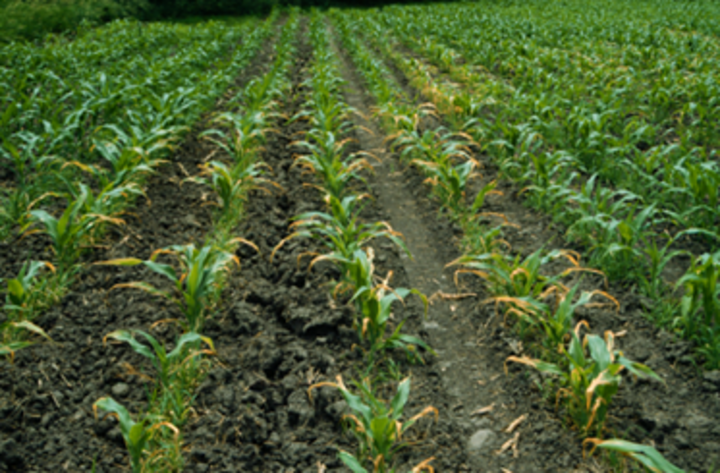
As corn emerges and producers begin to think about the next step in the growing season, for many that may include sidedress nitrogen (N) application, either as anhydrous ammonia or UAN solution. Some growers getting an early start on sidedress ammonia application have observed leaf burn after fertilization and wondered about the potential impact on yield.
In general, leaf burn after sidedressing ammonia looks worse than it actually is. Much of the emerged corn in Nebraska is around the V3 to V4 growth stage, and the growing point is still at or below ground level. At this stage, the corn plant can sustain what appears to be significant loss of leaf area without major impact on yield potential. With good growing conditions after leaf burn from ammonia, plants will recover.
Figure 1 shows ammonia damage on corn at the V6 stage, from sidedressing when soil was too wet. This is the most common cause of leaf burn from ammonia, due to ammonia escaping from the slot formed by the application knife. When soil is drier, it is easier to seal the knife slot and ammonia is less likely to escape. Waiting until soils are dry enough to begin sidedress application will reduce leaf burn potential, but more importantly reduce the potential for soil compaction.
Producers also may be concerned about nitrogen loss when ammonia escapes through the knife slot. Most often this loss is relatively insignificant, even if vapor is observed and leaf burn occurs. Most ammonia will be in the liquid form when applied. Ammonia combines quickly with soil water, forming ammonium hydroxide, and then quickly attaches to cation exchange sites on soil clays and organic matter.
At typical application rates for most silt loam soils in Nebraska, the ammonia retention zone will have a diameter of 2-4 inches about the injection point. Even with an open slot and gaseous ammonia escaping back to the soil surface, nitrogen loss through the knife slot usually will be less than 5%.
Richard Ferguson
Extension Soils Specialist
